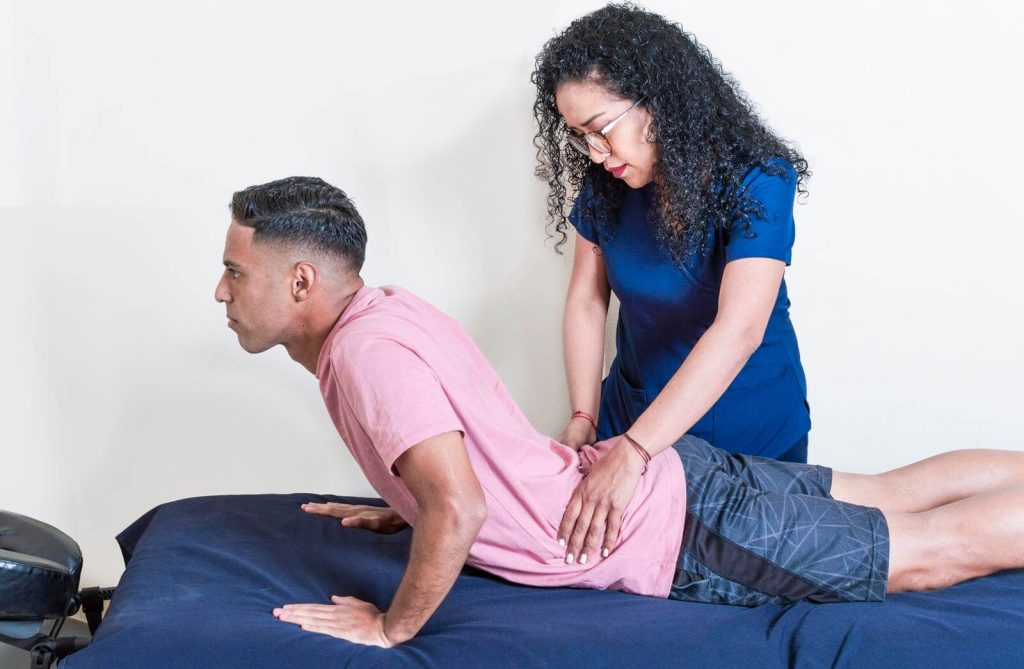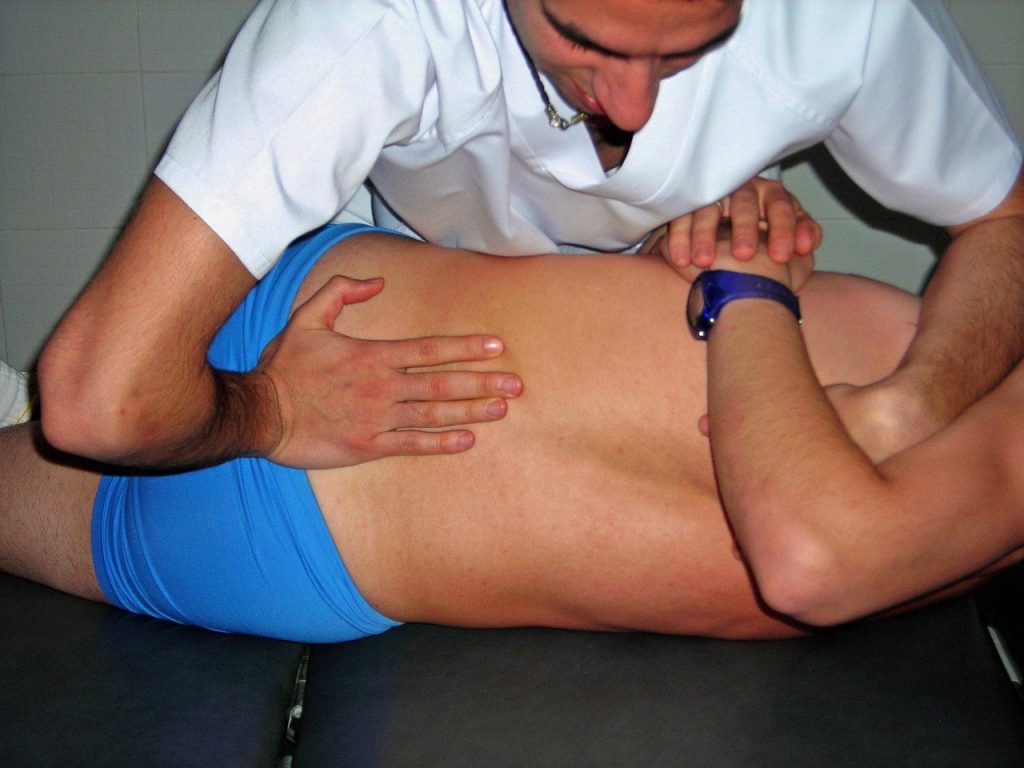
Sciatica can be a real pain, literally. It can stop you from doing everyday things like walking comfortably, sitting for long periods, or even sleeping well. If you’re wondering whether an osteopath can help, the answer is yes; many people find relief through osteopathic care. But how does it work?
Let’s break it down.
Understanding Sciatica
Sciatica isn’t a condition by itself; it’s a symptom. It happens when the sciatic nerve (that travels from the lower back to the legs) becomes inflamed or compressed. It can cause pain, tingling, numbness, or weakness in your back, bottom, and legs. Sometimes, it happens because of a vertebral disc injury, tight or injured muscles or pressure from another body structure. This can be caused by an injury, sudden movement, lack of flexibility and strength or sitting in a bad position for too long.
How Osteopathy Works
Osteopathy is a type of healthcare that focuses on how bones, muscles, and joints work together. Osteopaths don’t just look at where the body hurts; they look at how it moves and functions.
Osteopaths are fully trained healthcare professionals in the UK. They study full-time for four years, learning about anatomy, pathology, neurology, and more. They’re also registered with the General Osteopathic Council (GOC), so you can trust you’re in safe hands.
What an Osteopath Does for Sciatica
Osteopaths are well-equipped to help with sciatica. Since sciatica often results from musculoskeletal (MSK) problems, it’s right up their alley. They can assess how your spine, muscles, and posture affect the sciatic nerve. You don’t need a GP referral; you can see an osteopath directly.
Osteopaths use gentle hands-on techniques to improve body movement. These include soft tissue massage, joint movement, and stretches. The goal is to ease pressure on the sciatic nerve and improve mobility.

Can an Osteopath Alleviate Sciatica Pain?
Many people feel better after seeing an osteopath. While they can’t “cure” the underlying causes like a slipped disc, they can often help reduce the pain and get you moving more comfortably. Treatment usually focuses on reducing tension, improving mobility, and helping your body heal naturally.
It’s important to know that osteopaths don’t rely on medication or injections; they work with your body to support recovery. If they think you need further help, they’ll refer you to another healthcare professional.
What to Expect from Osteopathic Treatment for Sciatica
At your first appointment, your osteopath will ask questions about your health, lifestyle, and the pain you’re experiencing. They will conduct a thorough physical assessment, often including tests for your nerves, muscles, and joints.
From there, they’ll put together a treatment plan. It might include:
- Gentle manual therapy to the muscles or joints.
- Posture advice
- Movement or stretching exercises
- Tips for daily activities to avoid aggravating the pain
Appointments are usually longer than expected from a GP visit, giving you time to feel listened to and properly assessed.

Benefits of Osteopathy for Sciatica Relief
Here are some reasons people choose osteopathy for sciatica:
- Quick access – many osteopaths offer appointments within 24 hours
- No referral is needed – you can book straight in
- Whole-body focus – treatment looks beyond just the pain area
- Trained professionals – osteopaths complete extensive training and must be GOC-registered
- Tailored care – treatment plans are personalised for your needs
- Take time to listen to you and provide a thorough examination.
How Osteopathy Complements Traditional Sciatica Treatments
Osteopaths can replace other treatments and manage sciatica by themselves. Other times, Osteopathy can be a helpful addition. Some people use it alongside advice from their GP or physiotherapist. It’s beneficial if you’re waiting for an NHS appointment and need support now.
Osteopaths can also guide you on safe movements and habits to help prevent sciatica from coming back.
Finding Relief: Can an Osteopath Help with Sciatica?
In short, an osteopath can reduce sciatica pain and improve your movement. They’re highly trained, regulated professionals who can assess, diagnose, and treat MSK conditions, including sciatica, without needing a referral.
If you’re looking for an Osteopath in Croydon, the team at Arc Osteopathy offers expert, patient-centred care. With their holistic approach and clinical knowledge, you’ll be in good hands when you walk through the door.
Final Thought
Sciatica can make daily life difficult, but you must not deal with it alone. Osteopaths are trained to look and identify what’s causing pain and help your body heal naturally. With a focus on gentle, hands-on care and whole-body wellbeing, osteopathy can offer real relief for many people. If you’re struggling with sciatica, seeing an osteopath might be a helpful and reassuring step forward.
